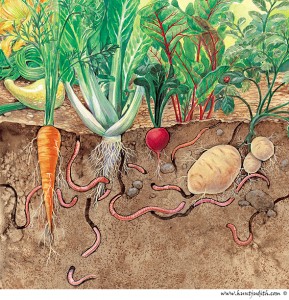North Carolina Worms - The Facts
Wiki Article
North Carolina Worms for Dummies
Table of ContentsMore About North Carolina WormsThe Definitive Guide for North Carolina WormsWhat Does North Carolina Worms Do?North Carolina Worms Can Be Fun For Anyone
Example: 1-gallon of worm castings to 4 gallons of potting mix. 1/2 cup in the bottom of the growing opening for smaller plants. 1 mug for bigger plants.
The enhancement of tea can additionally include boosted microbial biomass to your soil. You can always side-dress your plants with worm spreadings any time. Simply bear in mind, the microbes will certainly pass away if revealed to UV rays (Sunlight), so make certain to cover the spreadings with an inch approximately of soil.
This baffled them for years up until the testing approaches ended up being much better. It would certainly get far better(with even more castings), degree off, and then decrease. Too numerous worm spreadings would increase the growth to a rate that the plant might not recuperate from.
The Basic Principles Of North Carolina Worms
I have expounded the merits of worm castings for concerning 2000 words. Worm spreadings are no different. It takes time to develop high quality worm castings.You can buy them which brings about number two. Worm castings certainly set you back greater than chemical fertilizers. Worm castings are on the cheaper end of natural plant foods. You will need to decide what is extra important. It is easy to generate percentages of worm spreadings. (50 gallons each year) It is a much tougher and extremely pricey financial investment to generate large quantities of worm spreadings (North Carolina Worms).

As a matter of fact, producing a healthy and balanced soil may be the best benefit of worm spreadings. Healthy dirt was gone over and how vital this has become to everyone. The top ten advantages of worm spreadings were additionally provided. We talked about worm castings NPK and also the proper nutrient evaluation that need to relate to worm castings.
Not known Incorrect Statements About North Carolina Worms
We spoke concerning some of the downsides associated with worm spreadings. I covered a lot of product in this short article.The upright burrows are normally open, although the worms top the top with deposit and waste matter. Origins need oxygen for their development, whereas they generate carbon dioxide that requires to leave the dirt.
Earthworms boost porosity by 2 mechanisms: (1) by creating long-term burrows, and (2) by enhancing dirt gathering. Gathering is boosted by the mixing of dirt and organic issue in the earthworms' digestive tracts. Lake Hickory Bait. These extremely secure accumulations are transferred by some earthworms in their burrows, and by others at the surface area of the dirt


In another research study, earthworms were estimated to consume 4 to 10 percent of the top 6 inches of the dirt yearly. Dirt compaction decreases the porosity of the dirt.
The 9-Second Trick For North Carolina Worms
Normal earthworm populaces can conveniently consume 2 tons of completely dry issue per acre each year, partially digesting and mixing it with soil. The importance of earthworms to blend surface residue with dirt becomes very clear in soils that do not have any type of earthworms. The majority of our Pennsylvania dirts have at least some earthworms, and the effect of their total absence, consequently, can not be kept in mind.(https://ad-links.org/North-Carolina-Worms_323077.html)In these dirts, the formation of topsoil with reasonable natural matter content did not occur, resulting in poor crop development. As soon as the cause was developed, the government of the Netherlands started a project to introduce earthworms. After the intro of the earthworms, a dark topsoil layer was formed, and crop development boosted considerably.
They live largely from partly broken down raw material that is currently integrated in the dirt. They consume their means via the soil, developing straight burrows that they full of their waste matter. These types ingest large quantities of soil that they combine with digested crop deposit in their guts. or anecic species live in permanent upright burrows that can be 5 or 6 feet deep.
Their burrows remain open, although they cover the leading with plant residue that they draw to the entry. These varieties ingest substantial quantities of soil that they mix with digested residue in their guts. Their waste matter is mostly deposited at the surface area of the dirt. The nightcrawler Lumbricus terrestris is one of the most popular participant of this team.
Report this wiki page